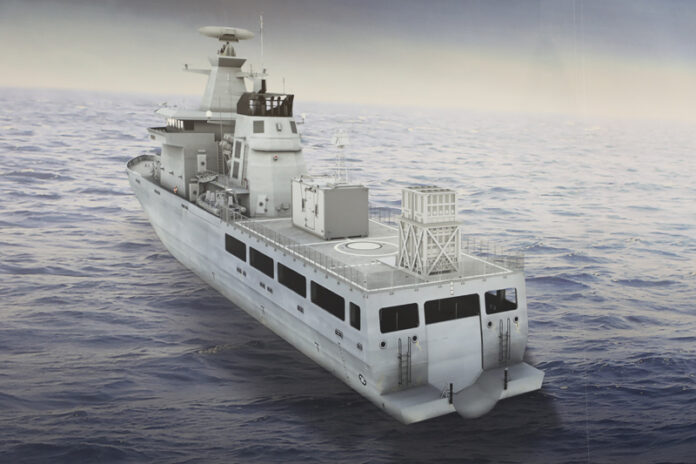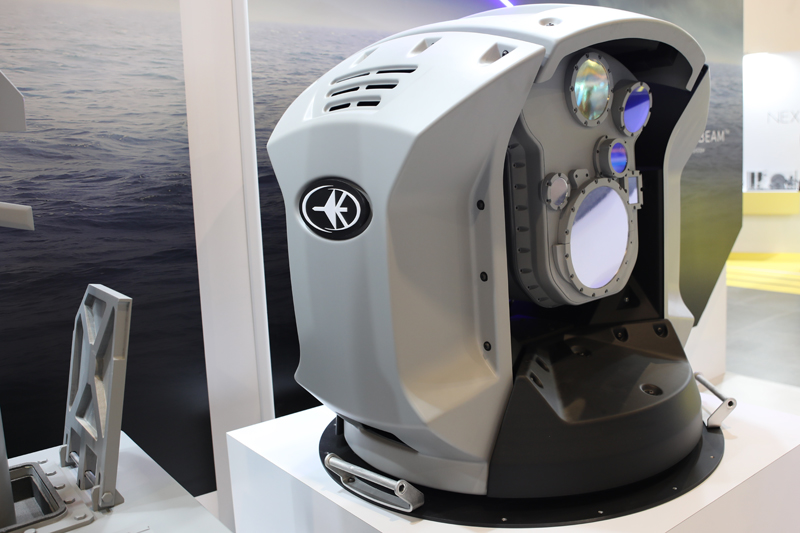
Rafael used the IMDEX 2023 exhibition in Singapore to show two new naval weapon products, one that is ready for the international market and another still in development.
The first is the C-Dome Mission Module air defence solution. This builds upon the standard C-Dome – now in operation with the Israel Navy, and itself based on Iron Dome – but packages it as a module that can be added or removed from naval vessels.
This plug-and-play solution comes in the form of two 20-foot container-sized modules. One is a C2 and detection module that can come with integral 3D radar if a vessel does not have its own air defence radar.
The other is the launcher module that features twin vertical launchers of ten interceptors each. This module measures 6.1 metres long, 2.44m wide, 4.4m high and weighs 12 tonnes. More than one launcher module can be installed on a vessel, increasing the number of missiles available.
The key characteristic of the C-Dome Mission Module is that it can deploy on vessels only when needed, plus it gives lightly armed vessels a much-improved air defence capability. It could be used on patrol vessels, mine countermeasures vessels, auxiliary ships and offshore patrol vessels (OPV). It could even be temporarily installed on oil rigs.
Coming with an Israeli radar, the system can integrate with a ship’s existing sensors and combat management system. It can be operated locally or remotely by anywhere from 1-3 operators.
C-Dome Mission Module provides hemispheric protection against individual or saturation attacks, and it can even defend land-based zones.
Naval Iron Beam
The second new product displayed by Rafael at IMDEX 2023 was Naval Iron Beam, which of course is based on the company’s land-based Iron Beam laser weapon.
Yoram Israeli, head of marketing & business development, Naval Warfare Systems Directorate of Rafael’s Land & Naval Division, explained to Asian Military Review that it is probably still another 2-3 years away from hitting the market.
The standard Iron Beam is already operational, but the naval version requires greater protection from the elements, and obviously stabilisation is a key requirement if the high-power laser is to precisely hit targets.

Israeli said a feasibility study was recently completed, and it was decided that the Naval Iron Beam is indeed a realistic proposition.
One obvious advantage of high-energy lasers as defensive weapons is that the cost per intercept is negligible, and they have an unlimited magazine. They thus make a good complement to traditional multi-layer air defence umbrellas.
The laser’s power rating will be at least 100kW, in order to quickly destroy targets. The Rafael representative said that power supply on ships should not be an issue, as most naval vessels have excess generator capacity. Indeed, ships in the future could end up with more than one Naval Iron Beam in order to achieve 360º coverage.
The Naval Iron Beam would comprise a thermal course tracking sensor, fine tracking sensor, laser illuminator unit, day-sight camera and laser rangefinder receiver.
Asian Military Review understands that Naval Iron Beam could target a range of threats, including UAVs, aircraft and anti-ship missiles out to a range of ‘several kilometres’.
Israeli said it would be suitable for a wide range of vessel classes, even those that are smaller than OPVs.
by Gordon Arthur












